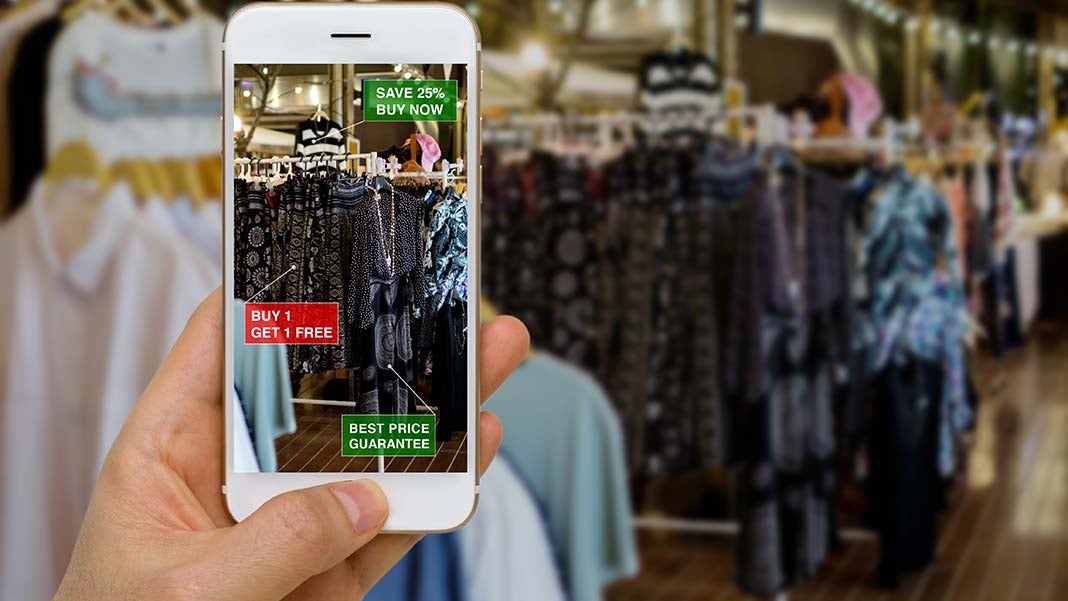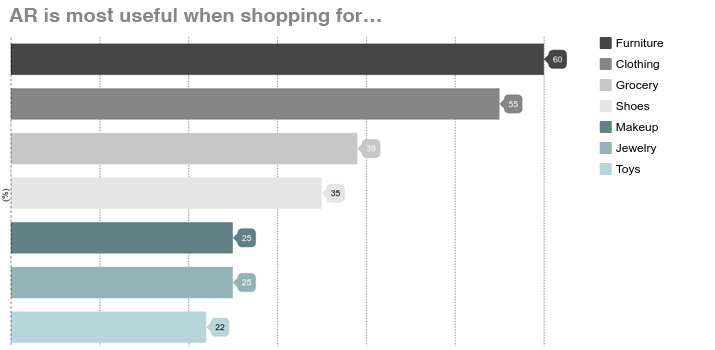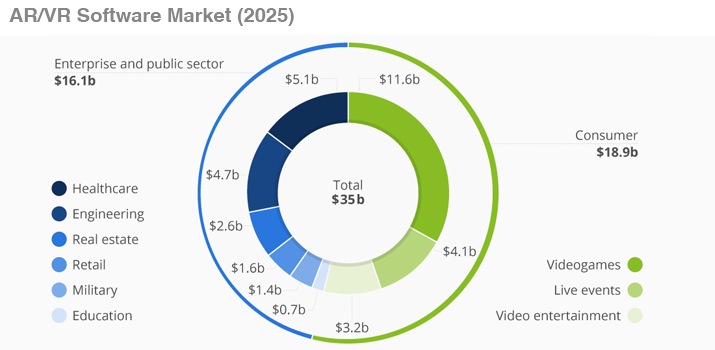5 Reasons to Use Mobile Augmented Reality in Retail
By: Andrei Klubnikin

Fueled by the increasing adoption of smartphones and tablets, the global mobile Augmented Reality market will top $ 79 billion in five years. The astonishing success of Pokemon Go paved the way for new AR applications and proved the technology’s potential stretches far beyond entertainment.
Retail is one of the industries experiencing AR boom right now. From employee training to Augmented Reality shopping, here’s how mobile AR transforms brick-and-mortar stores.
Augmented Reality retail: Benefits get real
Augmented Reality – a cutting-edge technology that integrates computer-generated images into user environment and live video content – has in fact been around for two decades.
Back in 2013, IKEA became one of the first brands to create an AR mobile app which allowed customers to virtually furnish their apartments with the company’s latest catalog items and share enhanced pics on social media. Converse, Lego and Uniqlo AR apps followed.
Yihaodian, one of the biggest online grocery companies in China, even set up several AR stores at empty city spaces; customers could walk along virtual aisles with their smartphones out, place orders and have goods delivered to their homes!
But these were the exceptions rather than the rule: this year, however, is the time when our wildest AR dreams may finally come true. As e-commerce sales continue to grow (in 2016, online sales accounted for 11.7% of purchases made by US customers), physical stores seek new ways to deliver the ultimate shopping experience and embark on Digital Transformation projects.
Augmented Reality is the very technology that holds the most promise for retail companies. Here’s the proof:
- Users know & love AR. According to the recent Interactions Consumer Experience Marketing study, 34% of US consumers already turn to AR apps while shopping, and almost half of those enjoy the experience. The same survey also found that 71% of customers would shop at a retailer that made use of the new technology.
What’s more, 72% of shoppers claim to have purchased items they never planned to buy…because of Augmented Reality! AR has the power to educate, engage and motivate users; why not take advantage of it? - Compared to VR, Augmented Reality has a lower entry barrier. While the price of a decent Virtual Reality headset ranges from $ 75 to $ 799, Augmented Reality content looks great on mobile. FYI, the number of smartphones out there will top 2.5 billion units next year.
According to Pavel Shylenok, CTO at R-Style Lab, it is the high cost of HQ 3D content (and lack thereof!), as well as limited control options and 2D UIs that keep Virtual Reality shopping apps from mass adoption. With AR, developers have a plethora of open-source tools (ARCore, ARToolKit, ARKit, etc.) to design high-end mobile and desktop applications. Over 90% of US customers already use smartphones while shopping; work with what you’ve got! - AR helps brands create memorable customer experiences. Tech-savvy retailers like IKEA, Target, Tesco and New Look make use of Augmented Reality applications to give customers more information about their goods and services, turn smartphones into mirrors to let them virtually try on clothes and make-up and craft personalized offers based on customers’ previous shopping activity.
Augmented Reality bridges the gap between traditional and online shopping – and that’s exactly what the future of retail will look like! - AR apps boast higher engagement rates than traditional shopping apps. Although retail apps convert 20% better than shopping websites, few retail companies manage to persuade customers to download their applications and use them on a regular basis. In fact, 49% of customers only start retail apps to look for discounts and special offers!
What about AR applications? New Look, one of the largest UK retailers, launched an Augmented Reality app targeted at UAE students; customers could scan their New Look loyalty card to access promotional and interactive content including the virtual “Create a new look” maker.
Per session, the average user spent up to 7 minutes in the app (compared to 3 minutes spent in non-AR apps). Investing in retail tech is the only way to engage picky customers – especially Millennials and Centennials who officially surpassed Baby Boomers as the biggest US workforce and buying power; - Augmented Reality increases sales. With 40% of US shoppers saying they are willing to spend more on a product if they are allowed to test it using Augmented Reality, retail investment in VR/AR software and gadgets is expected to reach $ 30 billion by 2020. Is the game actually worth the candle?
Hidden Creative, a Manchester-based marketing agency, recently conducted empirical research to test the effectiveness of traditional and AR display advertising campaigns. They found out customers were 29% more likely to purchase the product (a child’s toy) for a higher price after interacting with an Augmented Reality sample ad! AR offers a whole new way to showcase products; surprise your customers – and they’ll make it up to you!
Augmented Reality is, of course, one of the many technologies that transform shopping. Macy’s turned to beacons to boost sales during the 2015 holiday season and increased their app usage by 1600%. Other brands stick inexpensive RFID tags to product packages to track goods through supply chains or turn to Artificial Intelligence to crunch gigabytes of sensor data and gain a better insight into customer behavior.
What about your company? Do you believe new tech (AR in particular!) is the future of retail?
5355 Views
















